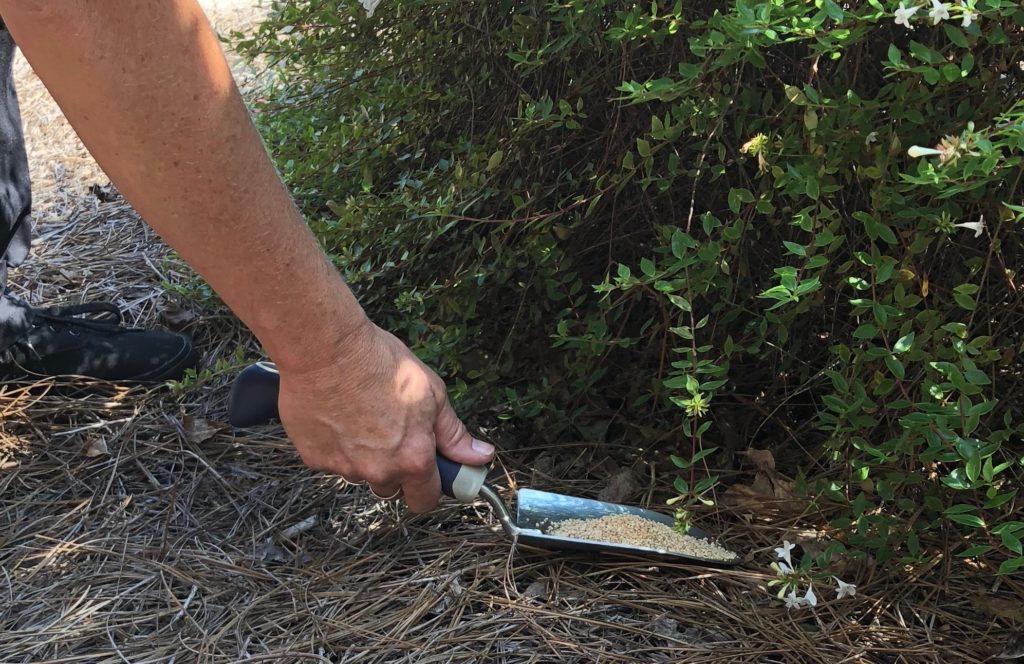Understanding Plant Nutrition
go.ncsu.edu/readext?628005
en Español / em Português
El inglés es el idioma de control de esta página. En la medida en que haya algún conflicto entre la traducción al inglés y la traducción, el inglés prevalece.
Al hacer clic en el enlace de traducción se activa un servicio de traducción gratuito para convertir la página al español. Al igual que con cualquier traducción por Internet, la conversión no es sensible al contexto y puede que no traduzca el texto en su significado original. NC State Extension no garantiza la exactitud del texto traducido. Por favor, tenga en cuenta que algunas aplicaciones y/o servicios pueden no funcionar como se espera cuando se traducen.
Português
Inglês é o idioma de controle desta página. Na medida que haja algum conflito entre o texto original em Inglês e a tradução, o Inglês prevalece.
Ao clicar no link de tradução, um serviço gratuito de tradução será ativado para converter a página para o Português. Como em qualquer tradução pela internet, a conversão não é sensivel ao contexto e pode não ocorrer a tradução para o significado orginal. O serviço de Extensão da Carolina do Norte (NC State Extension) não garante a exatidão do texto traduzido. Por favor, observe que algumas funções ou serviços podem não funcionar como esperado após a tradução.
English
English is the controlling language of this page. To the extent there is any conflict between the English text and the translation, English controls.
Clicking on the translation link activates a free translation service to convert the page to Spanish. As with any Internet translation, the conversion is not context-sensitive and may not translate the text to its original meaning. NC State Extension does not guarantee the accuracy of the translated text. Please note that some applications and/or services may not function as expected when translated.
Collapse ▲“Put-It-To-It” is not the best fertilizer plan for our gardens. I often hear that phrase from folks who apply 10-10-10 every year because that’s the way they’ve always done it.
We know that a balanced diet is important to our own health and the basic concepts regarding nutrition aren’t much different for plants. Plants can flourish or flounder depending on the nutrients they have access to and can use. The fertility menu you provide should match what the plant actually needs (not all plants need the same exact “diet”) and include nutrients that aren’t already available or in enough quantity in the soil the roots can reach into. That’s one reason you should get a predictive soil test done regularly so you can “Know Before You Grow”. In NC during part of the year, that analysis is conducted by the N.C. Department of Agriculture & Consumer Services at no charge for NC residents. If you haven’t taken advantage of this service in a few years, consider doing it now. The free period will end December 1.
Plants require 17 essential elements for growth. They obtain hydrogen (H), oxygen (O), and carbon (C) from irrigation water or as a gas via the atmosphere. We must provide the remaining 14 macro and micronutrients (elements) to help plants flourish. The quantity of macro and micros needed varies by type of plant, but they  are all required by the plant for growth. These include the macro-elements such as nitrogen (N); phosphorus (P); potassium (K); calcium (Ca); magnesium (Mg) and sulfur (S). Micro-elements are: boron (B); chlorine (Cl); copper (Cu); iron (Fe); manganese (Mn); molybdenum (Mo); nickel (Ni) and zinc (Zn).
are all required by the plant for growth. These include the macro-elements such as nitrogen (N); phosphorus (P); potassium (K); calcium (Ca); magnesium (Mg) and sulfur (S). Micro-elements are: boron (B); chlorine (Cl); copper (Cu); iron (Fe); manganese (Mn); molybdenum (Mo); nickel (Ni) and zinc (Zn).
Providing a complete and balanced “fertility menu” that contains all the essential elements is important to help plant growth. Balance is key for plants just as it is with us. It’s definitely not a case of more is better. Too much of a good thing can throw the system out of balance and may even cause harm from either deficiencies or toxic build-ups. For example, if too much Phosphorus is provided, it can obstruct the uptake of other elements and lead to Iron, manganese and zinc deficiencies. Or if there is too much potassium it creates either a calcium deficiency or a magnesium deficiency.
Know what kind of nitrogen you’re putting out. Nitrogen in fertilizers primarily comes from three sources. The form of nitrate-nitrogen promotes compact plant growth. This form is used when we want to avoid stretched out plants due to excessive overgrowth. The other two forms of nitrogen contained in most fertilizers are ammoniacal nitrogen and urea. Many organic fertilizers have nitrogen in these forms. Using ammoniacal nitrogen and urea-based fertilizers after plants have been transplanted helps them get a good start and encourages a flush of new growth. Read the label on your fertilizer package to identify what form of nitrogen it contains.
Plants require a certain level of phosphorus to grow adequately. Providing levels below that will result in less plant growth, while applications above that level don’t help the plant while dipping into your wallet.
All in Balance. “To go beyond is as wrong as to fall short” – Confucius
Minda Daughtry is Horticulture Agent for North Carolina Cooperative Extension in Lee County.




